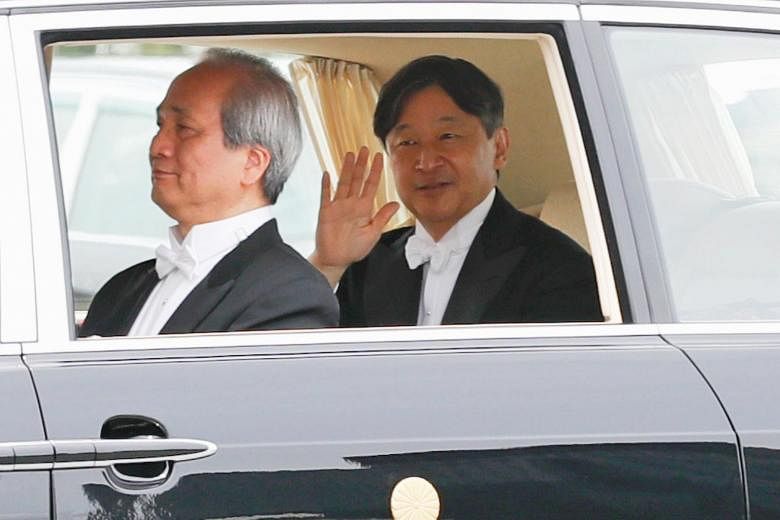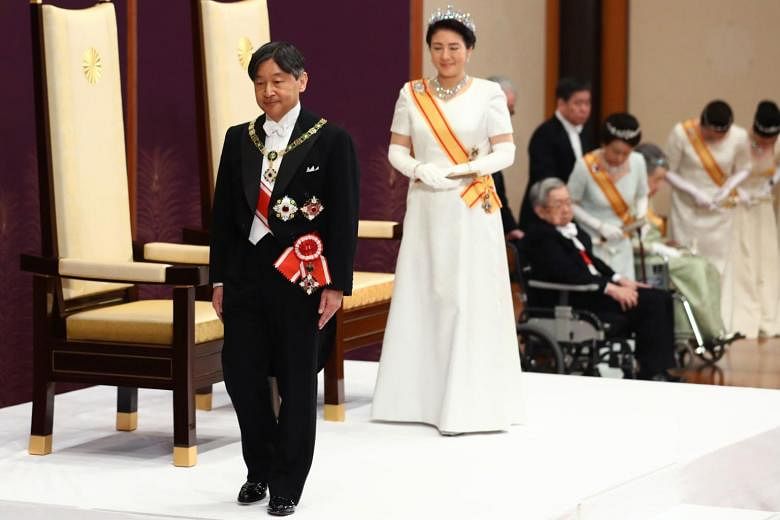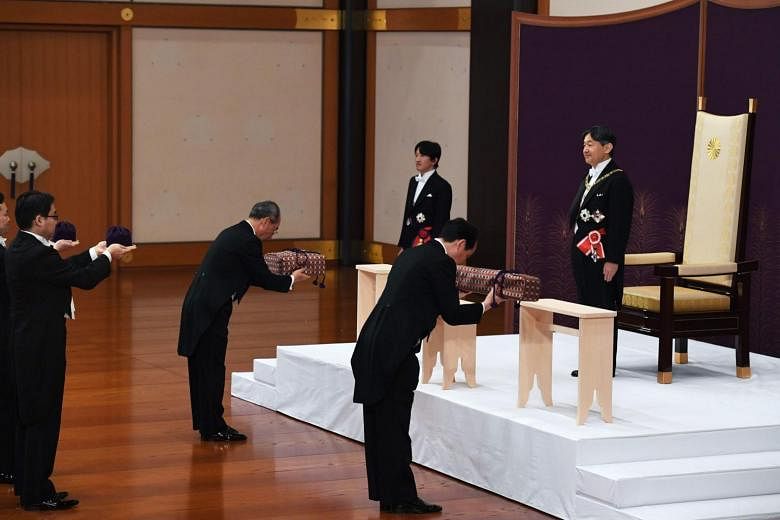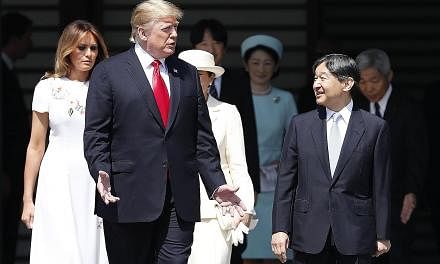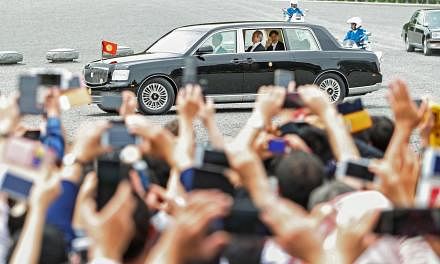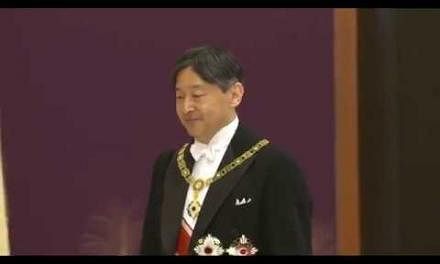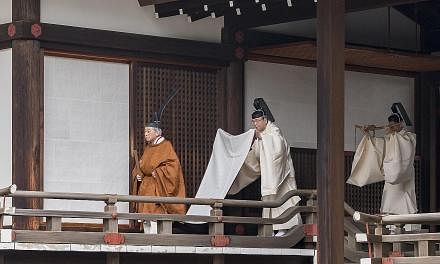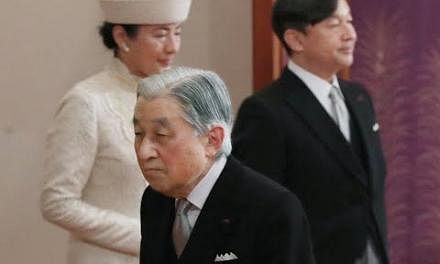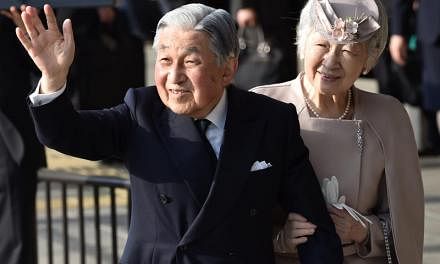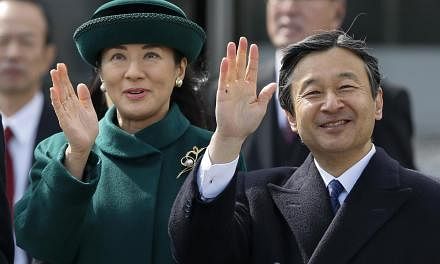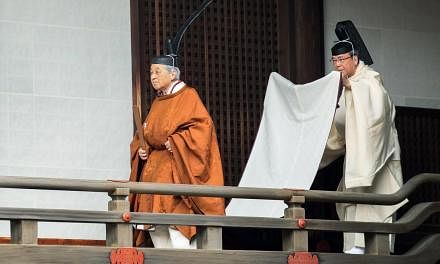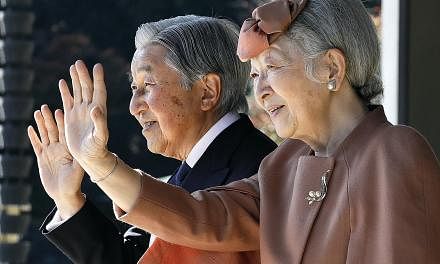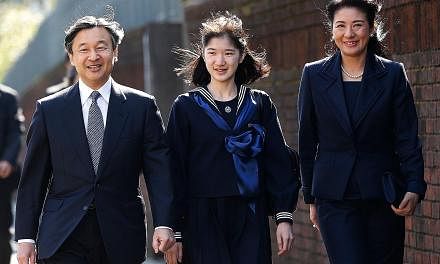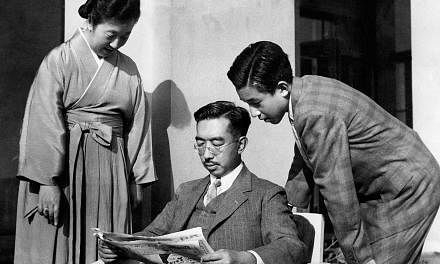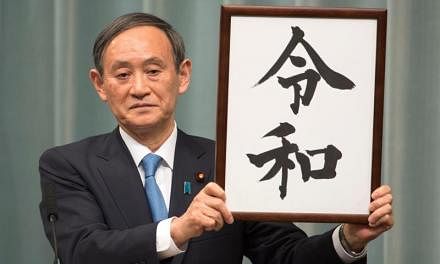TOKYO - Japan's newly minted Emperor Naruhito vowed on Wednesday (May 1) to follow the path of his father, Emperor Emeritus Akihito, in fulfilling his responsibility as the "symbol of the State and of the unity of the People".
This means "always turning my thoughts to the people and standing with them", Emperor Naruhito, 59, said in his first public remarks since ascending the Chrysanthemum Throne.
Millions across Japan counted down to midnight to ring in the new Reiwa (beautiful harmony) era, which has been marked by a mood of cautious optimism as a chance to "reset" the stagnation and passivity that had come to define the old Heisei (achieving peace) era.
Emperor Naruhito - whose name comprises characters that mean benevolent and virtuous - was introspective as he laid out his vision for his reign, offering his respect and appreciation for how his father had come to define and embrace the role as a symbol that is spelt out in the Constitution.
"When I think about the important responsibility I have assumed, I am filled with a sense of solemnity," he said, with his wife Empress Masako, 55, standing beside him.
"Looking back, His Majesty the Emperor Emeritus, since acceding to the Throne, performed each of his duties in earnest for more than 30 years, while praying for world peace and the happiness of the people, and at all times sharing in the joys and sorrows of the people," he said.
"He showed profound compassion through his own bearing," the Emperor said at the brief ceremony known as the Sokui go Choken no Gi, held at the most regal of halls at the Imperial Palace, the Matsu no Ma (State Room).
"In acceding to the Throne, I swear that I will reflect deeply on the course followed by His Majesty the Emperor Emeritus and bear in mind the path trodden by past emperors, and will devote myself to self-improvement."
Speaking after Emperor Naruhito, Japanese Prime Minister Shinzo Abe said: "We will look up to the Emperor as the nation's symbol, in our firm determination to foster a society where culture can be nurtured, where the people's hearts and minds are one, and where its people can take pride in a peaceful future that brims with hope despite the turbulent international environment."
Thousands lined the streets along the route between the Akasaka Estate, where the Emperor and Empress reside, and the Imperial Palace, with loud cheers of adulation breaking out as the motorcade passed by.
Earlier on Wednesday, Emperor Naruhito inherited the jewel and the sword - two of Japan's Three Sacred Treasures, or imperial regalia - as well as the state and privy seals, in the Kenji to Shokei no Gi ceremony that was his first official act as Emperor.
Only adult male royals are allowed to attend this core ceremony to mark accession, following a tradition set in 1889 when laws were first spelt out to restrict succession to the Chrysanthemum Throne to only male offspring in the paternal line of the imperial family.
This means that the Kenji to Shokei no Gi was witnessed by just two members of the 18-member royal family - Emperor Naruhito's younger brother Crown Prince Akishino, 53, and his uncle Prince Hitachi, 83.
Crown Prince Akishino's son, Prince Hisahito, 12, who is second in line to the throne is underage, while Emperor Emeritus Akihito is barred from official duties. The other 13 members are women.
But Cabinet ministers must attend the ceremony, which was declared a state event in 1989. As there were no women in the Cabinet in 1989, this means that as Mr Abe's sole female Cabinet minister, Ms Satsuki Katayama, 59, the minister in charge of regional revitalisation and female empowerment, became the first and only woman to have attended the ceremony.
The seals and the imperial regalia, which are proof of the Emperor's legitimacy, had been passed down by Emperor Akihito on Tuesday as he became the first monarch to abdicate the throne in over two centuries.
Emperor Naruhito, who was educated in Oxford University and is passionate about water conservation causes, can be expected to bring a more global outlook to the throne as Japan woos more tourists and opens up to immigrants, Nagoya University historian Hideya Kawanishi told The Straits Times.

But his succession is bound to spark questions about gender equality over the impending crisis over imperial succession, added Ms Shihoko Goto, senior associate for North-east Asia at the Wilson Centre in Washington.
Japan needs to urgently find solutions to the looming imperial succession crisis, and not kick the can down the road as it has previously done. While there were eight Empresses who oversaw 10 separate reigns in Japan's line of 126 monarchs, only males can inherit the Chrysanthemum Throne under the 1889 law.
Empress Masako is a polylinguist and a former career diplomat who had been part of negotiations to resolve Japan's trade disputes with the United States, but the overwhelming pressure for her to bear a son had caused her to suffer a stress-induced "adjustment disorder" in 2003.
Her only child with Emperor Naruhito, Princess Aiko, 17, is unable to succeed him because she is female. While the Empress largely disappeared from the public eye in the past, she has been slowly recovering and taking on more duties in the past year.
The new royal couple will greet the public on Saturday, with Emperor Naruhito slated to make hourly appearances on the balcony of the Imperial Palace with other members of the royal family.
Later this month, he will receive US President Donald Trump as his first state guest.
The official enthronement ceremony has been fixed on Oct 22 - a one-off public holiday - during which he will receive about 2,600 domestic guests and foreign dignitaries from 195 countries around the world.
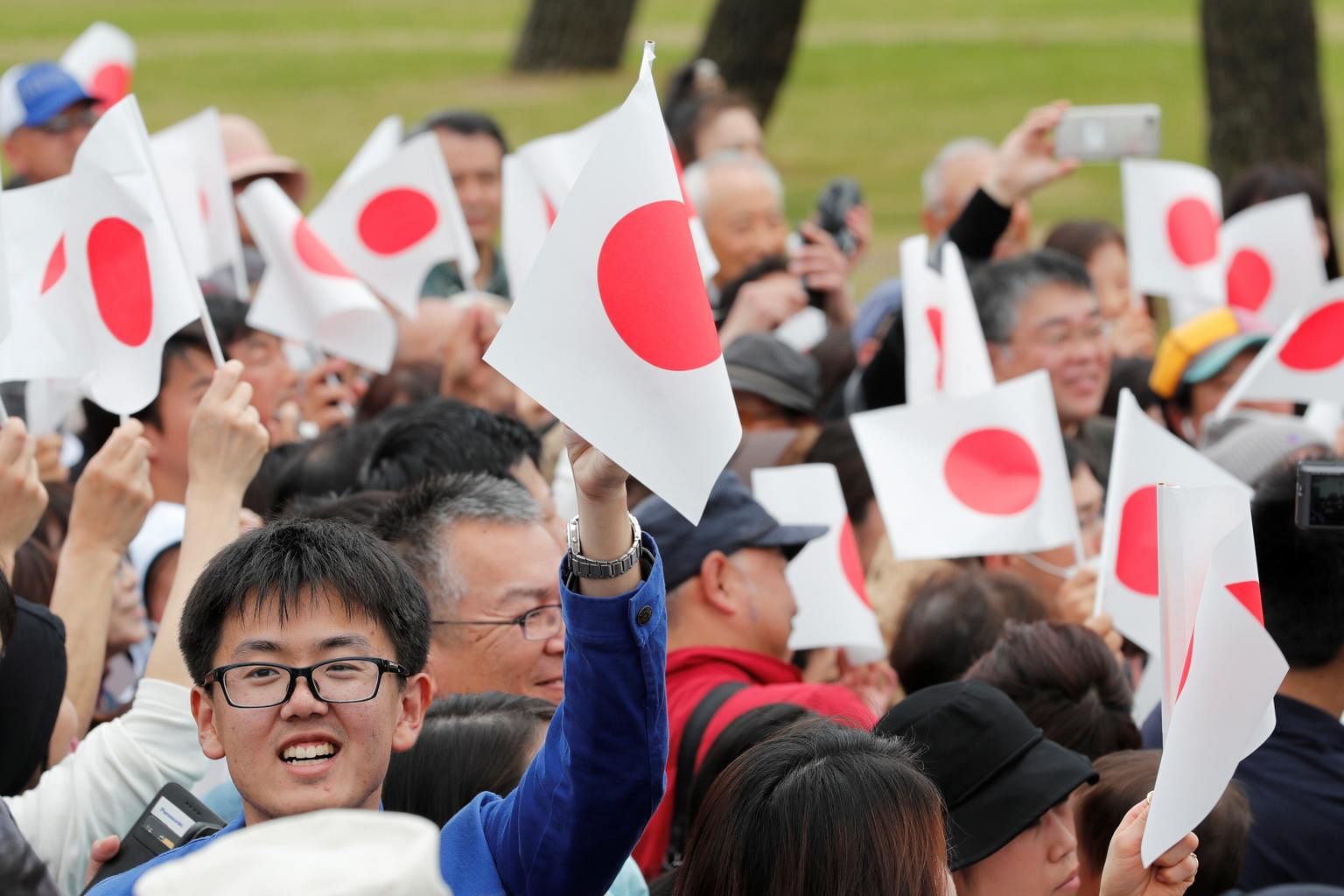
Singapore's then Prime Minister Lee Kuan Yew had attended Emperor Akihito's enthronement ceremony in November 1990.
The same day, a parade will be held for the Emperor and Empress to meet the public.
Undergraduate Tetsu Senoo, 19, hopes Emperor Naruhito will live up to his father's legacy by standing with the people and acting as the country's foremost icon of peace.
"I hope that Emperor Naruhito will be able to give the people kindness and happiness," he said. "And pursue world peace like his father did."
